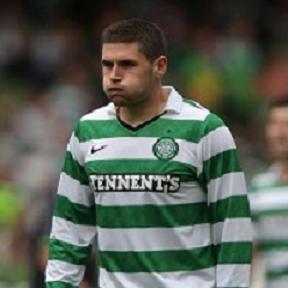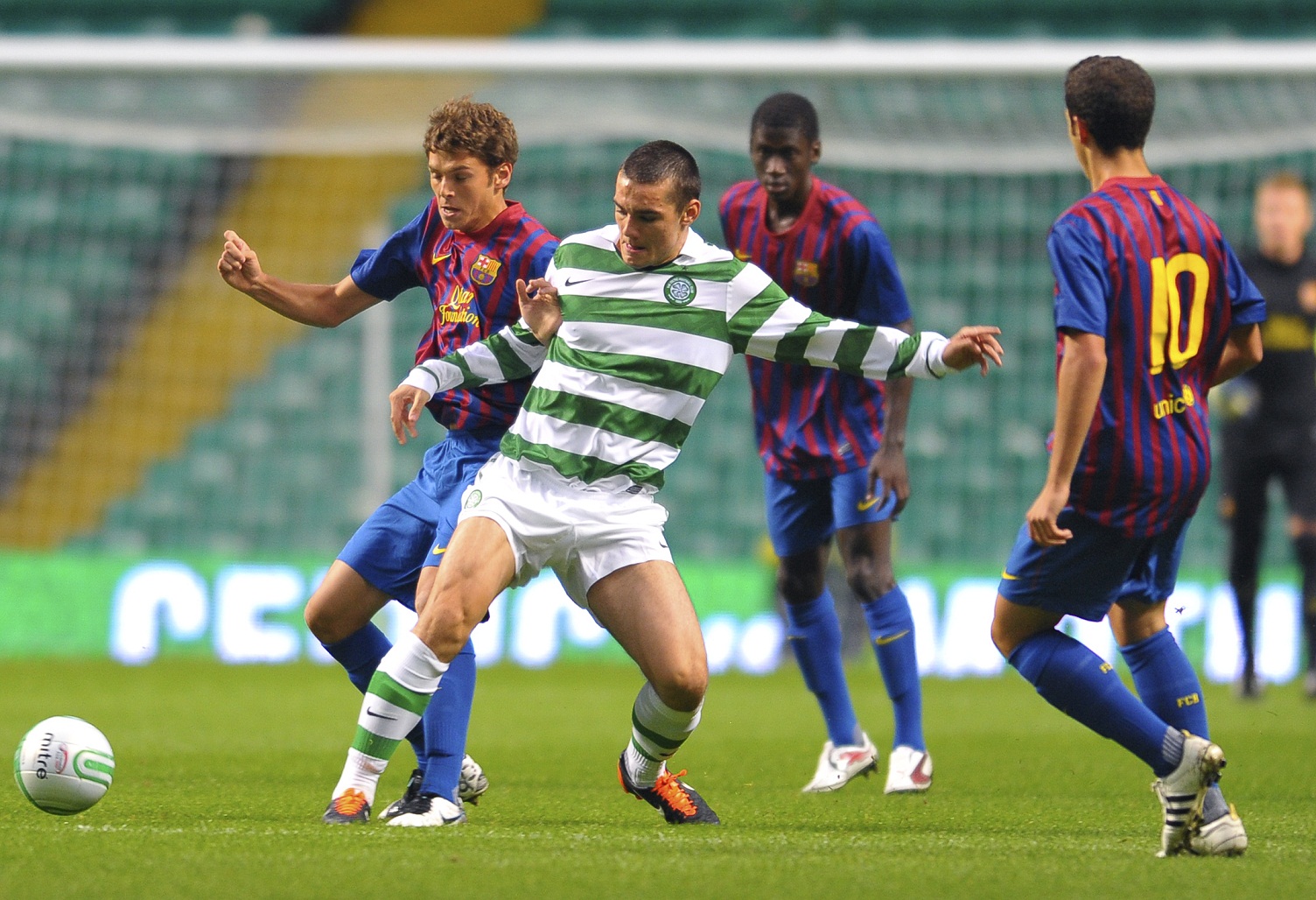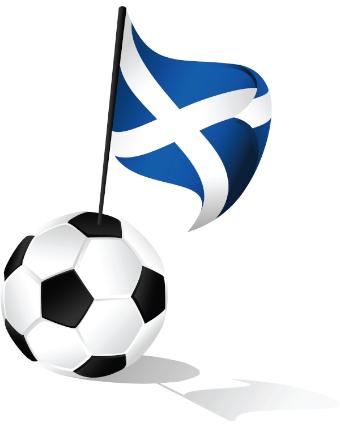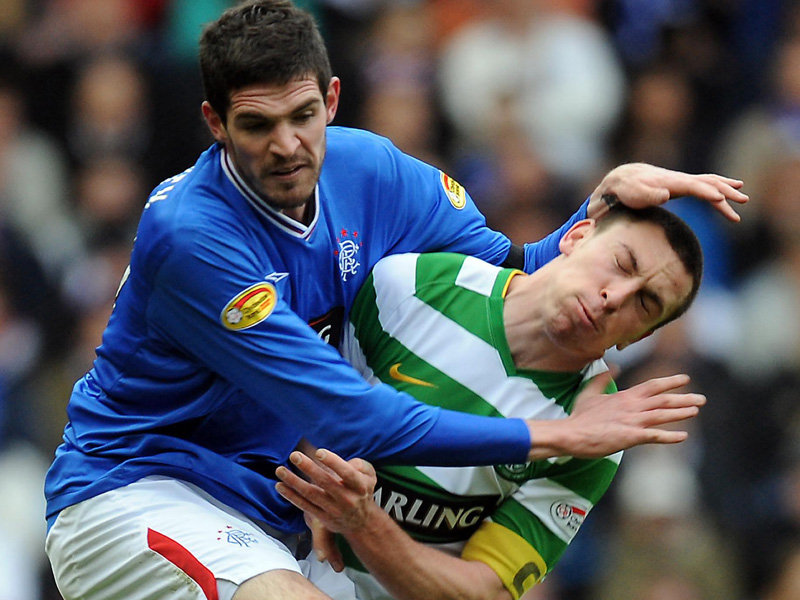It should also be noted that not only have both Porto and Udinese had a great deal of financial success but more importantly for football fans, they have been disproportionately successful on the pitch as well.
Look at their records. Porto have dominated Portuguese football for the past decade and during this time have won five major international trophies; the Champions League, UEFA Cup, Europa League, World Club Cup and the European Super Cup. While Udinese may not have won the trophies of Porto, they have been remarkably successful in recent years for a small club. Their match-day and commercial income is amongst the lowest in Italy (bottom half of Serie A clubs) and television revenue can be less than a fifth of what Juventus, Inter or Milan earn. Despite this economic disadvantage, they consistently outperform richer clubs, having qualified for European competition 8 times in the last 15 seasons.
We shall argue that Porto and Udinese’s disproportionate success is because of, and not despite, selling their best and most valuable players as they approach their prime. Moreover, as both Porto and Udinese operate on a significantly smaller budget to Celtic, we believe that it is important to analyse their business and sporting models to assess what, if anything, Celtic could adopt.
In order to provide some context to compare Celtic, Porto and Udinese we’ll look at relevant economic figures; their respective annual turnover and annual wages expenditure have been recorded below and averaged them from 2005 to assess their respective annual budgets.
Table 1: Economic Budget from 2005 onwards
Celtic FC Porto Udinese
Average Annual £67m £41.5m £29.6m**
Turnover*
Average Annual £36.8m £29.5m £18.8m**
Wage Spend
*Excluding transfer activity
**We were unable to obtain Udinese’s figures for 2011; therefore their figures have been averaged using the figures from 2005-2010
Before looking at their figures for transfer activity, it is necessary to give some context in the form of a brief overview of their respective transfer policies.
Porto’s Transfer Model
An in-depth analysis of Celtic and Porto’s respective transfer policies can be read here. However, very generally Porto have focussed on three main markets that have![]() provided the majority of their signings; Portugal, Argentina and Brazil. Furthermore, Porto tend to prioritise purchasing young players, usually in their early twenties that will have considerable resale value. The aspect of resale value of players as being integral to Porto’s model was explicitly outlined in their Annual Report of 2003, “The policy of equipping the team with high-quality athletes has not only provided excellent sporting results, but has also resulted in improving the potential of most of the company’s sources of income, particularly the growth of receipts of transfers; an essential factor for the financial equilibrium of the company.”
provided the majority of their signings; Portugal, Argentina and Brazil. Furthermore, Porto tend to prioritise purchasing young players, usually in their early twenties that will have considerable resale value. The aspect of resale value of players as being integral to Porto’s model was explicitly outlined in their Annual Report of 2003, “The policy of equipping the team with high-quality athletes has not only provided excellent sporting results, but has also resulted in improving the potential of most of the company’s sources of income, particularly the growth of receipts of transfers; an essential factor for the financial equilibrium of the company.”
Udinese’s Transfer Model
![]() Udinese’s player recruitment, like Porto’s, has an emphasis on obtaining young players with high potential resale value, however their scouting is more diversified than that of Porto. Udinese’s Sporting Director, Fabrizio Larini, outlines their system, “First of all, (Udinese has) a quick and extremely organised scouting system. Of course we don’t have the resources and money to compete with the big clubs in the race for a potential world-class talent. When they set eyes on a player, we are out.
Udinese’s player recruitment, like Porto’s, has an emphasis on obtaining young players with high potential resale value, however their scouting is more diversified than that of Porto. Udinese’s Sporting Director, Fabrizio Larini, outlines their system, “First of all, (Udinese has) a quick and extremely organised scouting system. Of course we don’t have the resources and money to compete with the big clubs in the race for a potential world-class talent. When they set eyes on a player, we are out.
“We basically have two options: Be the first to discover a future star of tomorrow – as happened with Alexis Sanchez – or look for unknown players in alternative markets, such as in Chile and Colombia instead of Brazil or Argentina. Or in the less important European leagues: Switzerland, Denmark, Slovenia.”
A cursory glance at their recent signings will indicate the breadth of their scouting operation. In the previous three seasons alone they have acquired players playing in Macedonia, Slovenia, Romania, Brazil, Switzerland, Greece, Colombia, Sweden, Ghana, Czech Republic, Chile, Argentina, South Africa, Venezuela as well as lower league French, Spanish and Italian football.
Table 2: Transfer Figures from 2005 onwards
Celtic FC Porto Udinese
Total Transfer Spend £77.3m £182.9m £98m
Total Transfer Income £52.3m £296m £208.4m
Total Transfer Net -£25m £113.1m £110.4m
Source: Transfermarkt
There is an obvious disconnect between the two tables, as Celtic have a substantially greater annual turnover and annual wage expenditure than both Porto and Udinese, yet they spend far less on transfers. This can be attributed to the fact that Celtic are far less successful in generating player sales income and therefore they do not have the capital to reinvest. Whilst Celtic have received just over £52m for player sales in the last 6 years (making a substantial net loss), Porto and Udinese between them have recouped more than £500m over the same period.
Obviously the markets in which they scout and obtain their players is important to this, but age at which they sell their players is crucial in maximising revenue that can be reinvested. Therefore we have gone through every player sale of over £5m for both Porto and Udinese, noting the age of the players at the point of purchase and sale to ascertain what is the optimum period to realise an asset.
Table 3: FC Porto’s £5M+ transfer sales since 2004
Bought Sold
Age Fee Age Fee
R Carvalho 20 Free 26 £26.4m
Deco 21 Undisclosed 26 £18.5m
P Ferreira 23 £1.8m 25 £17.6m
Maniche 24 Free 27 £14m
J Bosingwa 20 Undisclosed 25 £18m
R Queresma 20 £5.3m 24 £21.6m
L Gonzalez 24 £9m 28 £16.7m
L Lopez 22 £6m 26 £21.1m
Anderson 17 £4.4m 19 £27.7m
Pepe 21 £1.8m 24 £26.4m
R Mereilles 21 Free 27 £11.4m
Falcao 23 £4.8m 25 £35.2m
Source: Transfermarkt
Table 4: Udinese’s £5m+ transfer sales since 2004
Bought Sold
Age Fee Age Fee
Sulley Muntari 17 FREE 22 £8.8m
Vincenzo Iaquinta 20 Undisclosed 27 £9.9m
Aleksander Lukovic 23 £2.6m 27 £6.2m
Asamoah Gyan 17 Undisclosed 22 £7m
David Pizarro 20 Undisclosed 25 £10.6m
Fabio Quagliarella 24 £6.4m 26 £15.8m
Andrea Dossena 24 Undisclosed 26 £7.9m
Gokhan Inler 23 £0.9m 27 £15.4m
Alexis Sanchez 17 £2.6m 22 £22.9m
Simone Pepe 21 Undisclosed 26 £6.6m
Cristian Zapata 18 £0.4m 24 £7.9m
Source: Transfermarkt
The transfer figures obtained from Transfermarkt are not perfect in my opinion, for one thing a number of the transfer fees were undisclosed. However, despite its faults it is probably the most comprehensive transfer database available.
On every occasion that Porto have earned more than £5m in player sales, it has occurred from players purchased from either Portugal, Argentina or Brazil. In the aforementioned article, it could be seen that when selling players bought from their Portuguese domestic market, Porto, on average, recouped more than 6 times their initial fee. Furthermore, when selling players bought from Argentina and Brazil, they more than doubled their initial outlay.
Observing the ages at which Porto’s most valuable players were sold, with the exceptions of Lucho Gonzalez, aged 28 and Anderson, 19, all other players sold at huge profit from the ages 22-27. Interestingly, on every occasion that Udinese received a fee of £5m or more, the player was also between the ages of 22-27. It is also very interesting to note that these player sales have not had an adverse effect on Udinese. After finishing 4th in Serie A last season, they sold Sanchez, Inler, Zapata and Pepe for more than £52m of which just £19m was reinvested back into the playing squad. Where are they this season? At the time of writing, they are again in 4th place with just 5 games remaining.
Porto and Udinese’s general transfer policy of buying young and selling for large profits has undoubtedly been very profitable, but what happens when they stray from this policy and buy slightly older players? Something very interesting: In the last 10 years, when paying money for a player who is 25 years old or older, Porto have never once made a profit, whilst Udinese have only twice made a profit; on Alex Manninger and Gaetano D’Agostino. Both of the clubs have lost millions of pounds (or Euros) with regards to transfer activity for over-25 players and if you exclude the position of goalkeeper (a position that is often said to require more experience), the only outfield player to make a profit for either club was Gaetano D’Agostino and he cost less than £100,000.
It could be argued that Udinese are in an advantageous position as they play in a far more prestigious league than either Porto or Celtic. However, it would be a stretch to claim that Barcelona paid £18.5m for Deco or Chelsea decided to pay £26.4m for Ricardo Carvalho based upon their performances against Uniao Leiria or Beira Mar. No, quite evidently these players attained a high market value because of their performances in European competitions-they consistently proved that they were better than players from big clubs in the major leagues. The same would apply to Celtic players if they were consistently performing to a high level in the Champions League.
Celtic’s Transfer Model
As we have seen, both Porto and Udinese have adopted a fairly consistent and coherent transfer and sales model for some time now. However, it is certainly more difficult to succinctly analyse Celtic’s transfer policy and attribute such defined trends. This is partly because in 2007, Celtic appointed John Park as Football Development Manager, which brought about a distinct change in the club’s transfer strategy.
Prior to John Park’s appointment, the transfer policy appeared to give no attention to potential resale value of players and there was no sales policy integrated into their business model.
Probably the most obvious illustration of the difference of between Celtic and Porto’s respective transfer strategies can be observed when considering the 2003 UEFA ![]() Cup final. Of the two teams that played each other in Seville, Porto subsequently sold nine of that starting eleven, generating the club over £90m which was reinvested into regenerating the team. In contrast, Celtic sold just one player, Stilian Petrov. All other 10 players were allowed to run out their contracts and left without Celtic receiving a penny.
Cup final. Of the two teams that played each other in Seville, Porto subsequently sold nine of that starting eleven, generating the club over £90m which was reinvested into regenerating the team. In contrast, Celtic sold just one player, Stilian Petrov. All other 10 players were allowed to run out their contracts and left without Celtic receiving a penny.
The surge in investment from 2000-2002 that improved Celtic’s performance domestically and in Europe was flawed as the success was unsustainable when such expenditure is not aligned to an intention to recoup transfer fees and re-invest in the playing squad.
Subsequently, the line given to Celtic fans was that the club had possibly over-spent during this period and, to paraphrase Martin O’Neill, the fans would have to get used to life in the slow lane. In reality, the problem did not lie in transfer expenditure but in short-sighted asset management, as the Celtic board that had no intention whatsoever to recoup any of their huge investments in playing staff. Tens of millions of pounds were spent on transfer fees and wages for playing staff, with Celtic seemingly content for them run out their contracts and leave without the club receiving a fee.
For me, one of the most interesting things to arise from the figures regarding Porto and Udinese’s transfer activity is that the trends also apply to Celtic:
- As with Porto and Udinese, since 2004 Celtic’s most substantial fees recouped have arisen from selling players acquired from cheaper, peripheral leagues (or through the academy) and been sold between the ages of 22-27. This applies to the largest transfer fees that Celtic received for Stilian Petrov and Aiden McGeady, but also to the decent fees recouped for Scott McDonald, Gary Caldwell and Stephen McManus. If you look even further back, it would also apply to the cases of Pierre van Hooijdonk and Marko Viduka as well.
- Furthermore, like Porto and Udinese, Celtic have lost millions when buying players over the age of 25. Only once in the last decade have we made a profit on an over-25 player, Artur Boruc, whose position of goalkeeper is generally said to mature much later than an outfield player
At least though, Celtic appear to have partially recognised their previous shortcomings and since 2007 and the appointment of Mr. Park, there has been a distinct change in Celtic’s transfer policy, or perhaps more aptly put, there is now a transfer policy. A greater emphasis has been placed on recruiting young players and from a wider variety of leagues than previously.
Speaking in February of this year, Celtic Chief Executive Peter Lawwell explained that, “We did embark on a strategy four or five years ago where we redirected investment into our recruitment, into our academy, into our facilities building Lennoxtown,” adding that Celtic, “have built up a very strong squad. We’ve built up value in that squad.”
Similarly, in the summer of 2011, Neil Lennon outlined the club’s recruitment policy by saying, “We always look for players who might have a resale value in future”
Five years into Celtic’s new strategy and it is obvious that Celtic’s player recruitment has altered, as they appear to be prioritising young talented players. It could be argued, that we have not yet seen an implementation of a consistent player sales similar to that operated by Porto and Udinese. Perhaps though, this would be overly critical just five years into the process.
A challenge for Celtic will be to do what Porto and Udinese have done so well; selling assets when they are at their peak value. The ‘Webster ruling’ further complicates this as it states that any player who signed a contract before the age of 28 can buy himself out of the contract three years after the deal was signed. The prompt contract renewals of Kayal, Izaguirre and Ki would indicate that Celtic are fully aware of the possible implications of the ‘Webster ruling’
Equally though, Celtic will surely be conscious that unless Ledley and Hooper renew their current deals, both of these players could be bought in the summer of 2013 for the cost of the remainder of their contracts-just a fraction of their current market value. These decisions may be difficult for us (as Celtic fans) to contemplate, especially after a championship-winning year, but they are issues that should be considered logically and with reference to how Porto and Udinese would operate.
Expanding the Scouting Network
As we have observed, Porto and Udinese’s vast transfer profit is due to intelligent asset management and also excellent player recruitment, brought about by the wide scouting networks that both clubs possess.
Porto scout Rui Barros echoes the opinion of Fabrizo Larini, that speed is essentially important to their model. Barros explains that “Big clubs are always on the lookout for the next big thing so we need to be fast and accurate in our picks.” To this end, Udinese employ more than 50 scouts worldwide as well as hundreds more ‘local contacts’. This investment in scouting staff has enabled Udinese to be quicker than most other clubs in spotting exceptionally talented footballers and gives them the short window of opportunity to purchase they player, before he becomes more prominent and attracts the interest of richer and more prestigious clubs.
 Celtic’s scouting has definitely improved and in particular the prioritising of younger players with high resale value is very welcome. However, I would suggest that a further expansion of the scouting network is imperative to identify players with high resale value and indeed to maximise Celtic’s potential. I believe it is significant that Celtic have never once bought from the Portuguese or South American markets used by Porto and Udinese in the last decade, that have provided both clubs with highly talented players and also high transfer fees.
Celtic’s scouting has definitely improved and in particular the prioritising of younger players with high resale value is very welcome. However, I would suggest that a further expansion of the scouting network is imperative to identify players with high resale value and indeed to maximise Celtic’s potential. I believe it is significant that Celtic have never once bought from the Portuguese or South American markets used by Porto and Udinese in the last decade, that have provided both clubs with highly talented players and also high transfer fees.
At least though, Celtic have belatedly identified the Portuguese market. This season they have been watching Diawara at Marítimo (now of Sevilla), Melgarejo of Paços de Ferreira and Ribeiro de Freitas of Olhanense. The latter two being South American, does invite the inevitable question; why scout South Americans in Portugal and not monitor South America itself? Apart from anything else, employing scouts in South America costs far less than employing scouts in the UK or in continental Europe, due to the differences in the cost of living and wages.
That Celtic have neglected South America is certainly not an issue of obtaining work permits. The work permit appeals process has become increasingly lax, allowing Celtic to obtain permits for a number of players who did not fulfill Home Office criteria, such as Mizuno, Du Wei, Zheng Zhi, Juárez, Wanyama, Bangura, Ibrahim and many more. Indeed, Celtic’s scouting indicates that they do not feel this is an issue.
Whilst living in South America for years, I would go to visit various clubs (in Colombia, Paraguay and Argentina) and watch their training exercises. I’d go to kids, youth and reserve games and watch innumerable professional games (Yes I admit, I’m a bit of a football obsessive). I’d often speak to coaches, and on occasion club officials, and ask them about all manner of things; physical preparation, tactics, scouting and how the clubs are financed. When asking people associated with the clubs, I’d always ask them if they had ever heard of Celtic coming down to look at players. The answer was always the same: No, never.
I was told of numerous clubs (Benfica, Porto, Udinese, Catania and a couple of major Brazilian clubs were repeatedly mentioned) and even sports agencies who would regularly look for players, but never Celtic.
Yet if Celtic apparently don’t scout the region, how did they acquire Efraín Juárez and Emilio Izaguirre? Not apparently from scouting Latin America. By Neil Lennon’s admission, he first noticed Juárez when he played a pre-World Cup friendly in London. Regarding Izaguirre, his agent had offered him to the MLS, numerous English clubs (notably Ipswich and Wigan) and even to Rangers before we agreed to sign him. This would indicate that we became aware of him due to the efforts of his agent rather than Celtic’s scouting system.
But what about the Costa Rican boys who were on trial at Celtic last week? Well, this seems to tie in with what I was told about sports agencies scouting players before clubs. The English sports management company Sillsport is run by Neil Sillet, a coach, physiotherapist and licensed FIFA agent. Whilst working for Derby County, Sillet would no doubt have worked closely with Paulo Wanchope, who in 2010 acquired a small second division team in his native Costa Rica, called Uruguay de Coronado. Subsequently, Wanchope has signed an agreement with Sillsport who presumably have substantial rights over the club’s players. As was reported in the Costa Rican press, Sillsport paid for Uruguay de Coronado to travel over to go on a European tour.
Though, possibly ‘tour’ is too grandiose a term. In reality, the ‘tour’ consisted of a series of exhibition games in Murcia in front of scouts from numerous clubs who had been contacted by Sillsport. Any sign of Uruguay de Coronado actually being represented was negligible as the playing kit and even Wanchope’s attire was not that of Uruguay de Coronado, but instead emblazoned with the Sillsport logo. Celtic attended these games organised by Sillsport and subsequently took three Costa Rican players on trial. Stoke City, also present, shall trial two other boys in the summer.
Perhaps there is nothing wrong with attending these exhibition games, but if watching 2nd division Costa Rican players at the behest of their agent is the extent of Celtic’s scouting in all of Latin America, it would be a concern and a definite area that Celtic could improve upon.
Conclusion
In this article and in my previous analysis of Celtic and Porto’s transfer policies, I have looked through their respective published accounts and transfer activity, attempting to draw conclusions on the keys aspects of their success, some of which were noted in bullet points in the introduction of this article.
As the lifespan of football managers becomes ever shorter it seems illogical, to me at least , to place all the responsibility of implementing a transfer model to an individual who may only be at the club in the short or medium-term. Very generally speaking, a football club should not be entirely dependent on a single manager who may have very good contacts from a region and without whom, they have little knowledge. Nor should a club be left vulnerable to the whims of a manager who is understandably acting purely in their own short-term self-interest to get instant success regardless of cost. Instead an over-arching club ethos is required, within which club staff operate.
Equally, I accept that there can be dangers in being overly dogmatic – there are exceptions to everything. For example, Udinese obviously believe that Antonio Di Natale has far more value to the club than purely his monetary worth and in the past I have suggested that Celtic should consider buying Egídio Arevalo Rios. So even though I am advocating Celtic to apply these general principles, there are always going to be exceptions to the rule.
Finally, I hope any criticism of Celtic is viewed in the manner in which it is intended, as constructive criticism. I truly love Celtic and I want them to be the best they possibly can be, in every single aspect of the club.
Personally, I think it is very doubtful Celtic could win the Champions League whilst operating with their current level of transfer expenditure. However, by implementing a sophisticated transfer strategy, Udinese and Porto have shown that the model can provide clubs with increased capital, allowing them to obtain more valuable and talented players that can successfully compete at the highest level of European football.
Porto won the Champions League. Neil Lennon is correct-Celtic can win the Champions League too.





